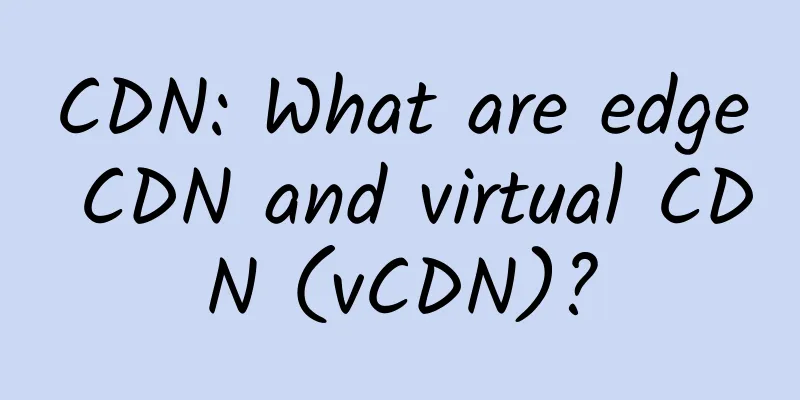Why are there so many different communication protocols in industrial sites?

|
This is a big question, so I will briefly talk about the main reasons why there are so many different communication protocols in the industrial field and the development history of the industrial bus. The main ideas come from this book: Title: Industrial Communication Technology Handbook Version: Second Edition Author: Richard Zurawski. In 1985, IEC envisioned using a committee to identify a single standardized bus system to unify the network landscape of factory and process automation. But after 14 years of technical and political struggle, it finally failed. Instead, the compromise products IEC 61158 and IEC 61784-1 were created. Let's take a look at the style of the IEC 61158 standard: After more than a decade of debate among representatives of various countries, the final bus standards were not one, but 20! Are you surprised? Are you unexpected? This is equivalent to the Earth Alliance originally wanting to create a new Esperanto so that everyone would no longer have to work hard to learn foreign languages from kindergarten to university. As a result, countries debated for more than ten years, and the final Earth language standard listed the twenty most popular languages currently in use. Let’s answer the questions seriously below. There are many fieldbus standards in areas such as industry and smart buildings, mainly due to the following four reasons:
Among them, reasons 1 and 2 are the main factors and are internal factors, while reasons 3 and 4 are secondary factors and are also external factors. First, let's take a look at what fieldbuses are available: Reason 1: There are various network topology types in industrial sitesIndustrial bus is a digital communication standard that replaces analog signal transmission and allows more information to be transmitted bidirectionally between field devices and high-level control systems. So between which two ends does the bidirectional transmission of data take place? Let's look at the factory automation pyramid model: From the above figure, we can see that the network in the factory is actually divided into 6 layers according to the actual business. For example, the sensors and actuators at the bottom layer need to be connected to controllers such as PLC or CNC, and PLC, CNC and the main controller of the equipment also need to be networked; all the equipment in the workshop at the upper level needs to communicate with each other through the network, and above the workshop level is the factory-level and enterprise-level production information network. When the OSI model was proposed, many computer network systems were incompatible with each other. If you want to communicate between different computer networks, you need to invest in a lot of special software and hardware to do network adaptation. The OSI model is to solve this problem. ISO introduced the concept of open systems. Open systems contain software components and hardware components that follow a set of standards. In fact, this is the same as the current AWS cloud computing. AWS provides standardized API interfaces and services. The EdgeX framework of edge computing and the architecture of IIC are also designed with the same idea. The open system defines standard software interfaces and hardware. With these standards, it can be ensured that devices from different manufacturers can be compatible and communicate with each other. In order to simplify the complex issue of data transmission, the OSI model adopts a strict hierarchical layered model. The OSI model has three important concepts:
Fieldbus protocols are also modeled according to the ISO/OSI model. However, in most cases, only layers 1, 2, and 7 are actually used. This is a lesson learned from the failure of MAP. If the 7-layer model is fully implemented, it will require much more resources and cannot be implemented efficiently. Therefore, MiniMAP and subsequent IEC bus standards only have a three-layer structure: physical layer, data link layer, and application layer. The simplified protocol layer stack reflects the reality in many automation applications. Many buses are independent networks, extended with repeaters or at most bridges. Therefore, the network layer and the transport layer (mainly used for routing and end-to-end control) are unnecessary. The same is true for the other omitted layers. The bus protocol is not too complex. Therefore, the session and presentation layers are not necessary. But not all bus systems have 1, 2, or 7 layers. There are several buses that clearly define other layers. Especially in the field of smart buildings, the situation is a bit special. Due to the large number of nodes in smart buildings, the bus must be able to support a hierarchical network topology, such as Building 3/Mezzanine 2/Fresh air system 3/Controller/… Therefore, it is unreasonable for the intelligent building bus to have only three layers. EIB and KNX have network and transport layers for routing and end-to-end control in a hierarchical network topology. BACnet has a network layer, which is very important to it because BACnet is a high-level protocol that needs to control multiple low-level protocols and links, such as Ethernet, MS/TP based on RS-485, and LonTalk. For such a heterogeneous network, a unified network layer is very important. Of course, sometimes specific functions of layers 3-6 are needed. In this case, the required functions are placed in layer 2 or layer 7. For the IEC 61158 bus standard, the functions of layers 3 and 4 can be placed in layer 2 or layer 7, while the functions of layers 5 and 6 are always placed in layer 7. The most complex protocol structure in the bus is probably LonWorks. Even though it is mainly used in intelligent buildings, it is actually designed as a general control network that is independent of the application field. It is more like a local area network than a general efficient conventional bus. In the LonTalk protocol, all 7 layers of OSI are defined, although the 6th layer has few functions. The 3rd layer network layer is particularly rich in functions, supporting many types of data links (there are many types of data links in the field of intelligent buildings), many address addressing modes, advanced routing functions, and many communication objects. It can not only transmit process data and network management, but also file transfer. Among the commonly used bus systems in the industrial control field, ControlNet and P-NET are quite special in that they both implement Layer 3 and Layer 4. Reason 2: The characteristics of the data that need to be transmitted in industrial sites are differentFrom the perspective of the characteristics of the data that the bus needs to transmit, there are also many types. Some data requires high real-time performance, some data is periodic, some is sudden, some data is production data, some data is management data, and some data is tunneled on the bus....... These differences also determine that it is impossible to use one bus system to transmit data with different characteristics: Business requirements at different levels are different, so the corresponding bus protocol needs to be optimized and designed according to the actual application scenarios.
Reason 3: Technological progress and market demand lead to the emergence of new bus standardsAfter 2000, due to the development of Ethernet and higher requirements for real-time performance of controllers, many original serial-based buses were changed to Ethernet networks, resulting in bus standards such as Modbus/TCP, ProfiNET, and EtherCAT. At the same time, due to the technological development of WSN wireless sensor network during this period, a wireless version of HART bus has also appeared - Wireless-HART. Reason 4: Different companies and countries need to develop their own fieldbus standards and profit from themIt is said that first-class enterprises set standards, which shows the importance of standards. For standard-setting enterprises, they can make profits through standards. Since 1980, with the technological advancement of PLC and intelligent sensors and actuators, the automation industry has developed greatly. The further requirement for compact wiring, coupled with the development of the microelectronics industry, is sufficient to support the development of dedicated buses. Different application requirements have given rise to different bus systems. At that time, it was also an industry trend and a fashionable thing for automation companies to design and develop bus standards, just like every industrial control company is now engaged in the industrial Internet of Things. Several clarifications on the understanding of bus conceptsThere are various networks in factory workshops, including Ethernet, wireless, industrial bus, etc., and it is difficult for them to communicate with each other. Ordinary computer networks have the concept of Area, such as Local Area Network, Personal Area Network (PAN), and Wide Area Network (WAN). Factories also have the concept of Area, such as CAN, which stands for Controller Area Network. Many sensor buses in industrial sites do not have complex network topology, so the network layer and transport layer are not needed. The same bus will also continue to evolve into different versions with technological progress and application industry needs, a typical example being the CAN bus standard. To see whether a bus standard is good or not, we must first base it on its application scenarios, and secondly, we must understand the era and concept of its design in combination with the era in which the bus appeared. Whether a bus standard can succeed in the market does not follow the model of survival of the fittest, but depends on the market share of the bus standard proposer. This proposer can be an industrial giant such as Siemens, Schneider and their group of partner companies, or a standard committee formed by many industrial control companies and IT companies. It is wrong to simply divide the bus into the field sensor actuator bus and the machine/production process bus. The actual classification is more complicated than this. The earliest origins of the bus are actually in the aviation and automotive industries, and later on in the fields of industrial sites and smart buildings. Each industrial bus solution focuses on solving specific problems, and during the design process, various factors such as performance, reliability, hardware cost, software cost, flexibility, and ease of management are considered. Industrial buses are usually networked embedded systems, but in some cases they can also exhibit the characteristics of distributed operating systems. Many buses only define layers 1, 2, and 7 of the OSI 7-layer model, namely the physical layer, data link layer, and application layer. The reason is that the network structure is simple and does not require routing functions and end-to-end control. Fieldbus Development HistoryThe first stage: 1970~1980 brewing stage The origin of fieldbus comes from technological advances in four areas: Data transmission protocols based on telephone networks, such as V.21 and X.21, are the forerunners of fieldbus serial data transmission. Parallel bus interfaces for experimental measuring instruments and computer peripherals are standardized and data is transmitted in real time. The concept of electronic engineers defining standardized communication interfaces has also been inherited by the fieldbus. In addition, standards for multi-drop real-time transmission of data from multiple experimental instruments distributed in multiple spaces have also been established, such as the CAMAC standard for computer automatic measurement and control of nuclear physics and the GPIB bus for electronic test equipment. The development of computer science theory and the top-down hierarchical design concept of the OSI model later became the core guiding ideology of fieldbus hierarchical design. The development of electronic technology, integrated circuit miniaturization, I2C, microprocessors, connector technology, and RS-485 differential signal anti-interference have become the cornerstones of hardware technology for later bus standards. In the aerospace field, due to the restrictions on wiring and weight, the MIL STD 1553 bus was already available in 1973, long before the invention of the board-level bus. It is the first real field bus and was first used on the F16 fighter. It already has many characteristics of contemporary buses:
Later, in order to reduce the weight and cost of wiring, the automotive and industrial control industries borrowed from the design of the aerospace field and designed several industrial buses according to similar ideas. Important ones include Modbus, GPIB and other buses. The second stage: 1980~2000 development stage Since 1980, with the technological advancement of PLC and intelligent sensors and actuators, the automation industry has developed greatly. The further requirement for compact wiring, coupled with the development of the microelectronics industry, is sufficient to support the development of dedicated buses. Different application requirements have given rise to different bus systems. At that time, it was also an industry trend and a fashionable thing for automation companies to design and develop bus standards, just like every industrial control company is now engaged in the industrial Internet of Things. In 1978, Hubert Zimmermann proposed the OSI model, and ISO released the ISO/OSI model standard in 1984. The ISO/OSI model is the most important contribution to fieldbus. The OSI model is designed to be an open network model that can be implemented by all equipment manufacturers to overcome the integration difficulties caused by the use of many private network models. The fieldbus is also to solve the problem of communication between various heterogeneous networks in the factory. Therefore, the OSI model quickly became the guiding ideology of fieldbus design. In 1982, GM first used the OSI model concept to design the Manufacturing Application Protocol, or MAP for short, in an attempt to solve the communication problems of various layers of networks in industrial sites. This protocol was designed to be powerful and flexible, but it inevitably became very complex and the implementation cost was too high. So the protocol was simplified, and the result of the simplification was the MiniMAP protocol. The MiniMAP protocol only has layers 1, 2, and 7, focusing on the underlying network communication problems in the factory, rather than considering all levels of communication. However, this protocol still did not succeed. The Manufacturing Message Specification (MMS) protocol was later successful, defining many abstract objects and services, which later became the starting point for many other bus protocol designs. A feature of many fieldbuses is that they are defined based on traditional interfaces, with only the lowest physical layer and data link layer, but no application layer. Later, the application layer was added so that it can be used in other fields. CAN is an example of this evolution: CAN was originally used in the automotive industry, so the two lowest layers of the OSI model were sufficient. But in the field of industrial control, scalability and interoperability are important, and high-level functions are important. So in the field of industrial control, a special application layer was added. CAN did not define an application layer at the beginning, but this is the reason why many different bus systems (CANopen, SDS, DeviceNet) use CAN as a low-level interface. The third stage: 2000~now prosperous stage After 2000, due to the development of Ethernet and the increase in real-time requirements, many buses originally based on serial ports have gradually changed to Ethernet networks, such as Modbus/TCP, ProfiNET, EtherCAT and other standards. At the same time, with the development of wireless sensor network (WSN) technology, the HART bus has also launched a wireless version - Wireless-HART. The application of these communication protocols in industrial sites is to meet the communication needs between different devices and systems. Each protocol has its specific advantages and applicable scenarios. For example, Modbus/TCP is suitable for simple data exchange, while EtherCAT is suitable for applications with higher real-time requirements. This variety of communication protocols enables the equipment on the industrial site to be more flexibly interconnected, improving production efficiency and system reliability. Therefore, despite the increase in certain complexity and cost, the use of different communication protocols can better meet the diverse needs of industrial sites and promote the development and application of industrial automation technology. |
<<: How to configure PoE switch settings with NVR?
>>: 5G services market expected to exceed $919.4 billion by 2031
Recommend
DogYun (Dog Cloud) New Year's Day 20% off on all dynamic clouds, 10% off on classic clouds, 100 yuan off for independent servers per month, 50% off on lucky wheel draws
DogYun (狗云) has released a New Year's Day dis...
WiFi speed is slow, try these 8 simple tips
Slow WiFi speed is always a headache, especially ...
Ruijie's Minimalist Lighting Appears at the University Informatization Development Seminar, Focusing on New Infrastructure of Smart Campus
On April 16-17, the 2021 University Informatizati...
Kafka message sending thread and network communication
[[420379]] Let’s review the message sending seque...
Why not take a shortcut to achieve security? OneDNS protects school network security in the cloud!
There is a place that gathers the most energetic ...
Internet companies flock to launch satellites: Most are just gimmicks and it’s hard to find “Musk”|Guanchao
[[330113]] China was a little slower in opening u...
[11.11] LOCVPS top up 1000 yuan and get 100 yuan, Hong Kong VPS 30% off, 20% off for all
LOCVPS (Global Cloud) released a promotional plan...
Learn more about LoRa and LoRaWAN from a few questions
Question 1: What is LoRa? LoRa is the abbreviatio...
Seven steps to easy network segmentation
Network segmentation is a network security tool t...
During the COVID-19 pandemic, F5 ensures safe and stable remote work for Lancashire hospitals in the UK
Lancashire Teaching Hospitals NHS Foundation Trus...
New data transmission system developed: 10 times faster than USB
A new data-transfer system is here that's 10 ...
Verizon launches 5G private network in the United States and officially launches commercial use
Verizon Business recently launched its first comm...
The Evolution of Ethernet: From 10BASE-T to 40GBASE-T and Beyond
The Evolution of Ethernet: From 10BASE-T to 40GBA...
Who is responsible for the rampant online black industry?
[[188973]] A set of data: According to the 38th &...
5G new call concepts and key technologies
Labs Guide The pursuit of communication technolog...









